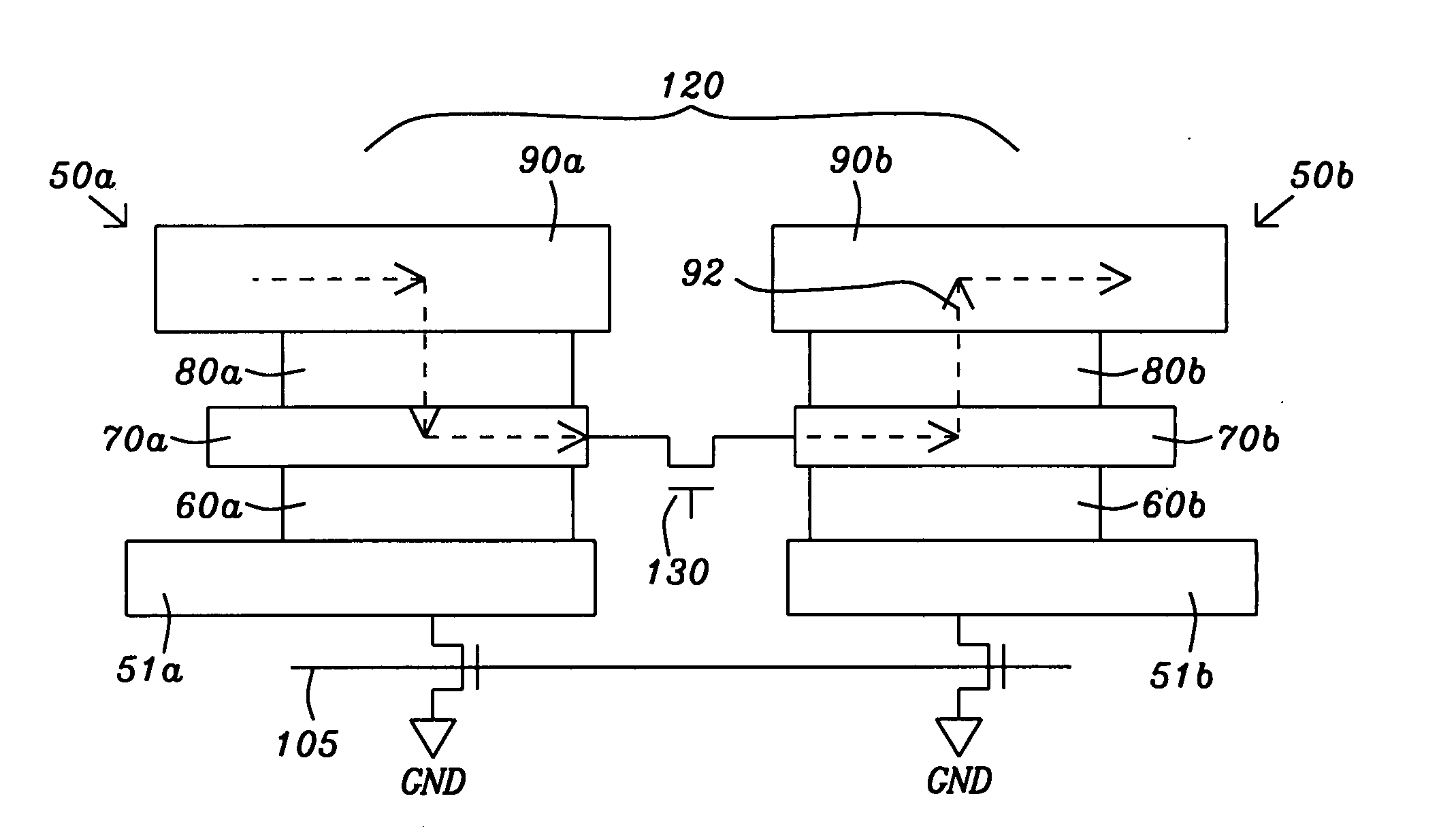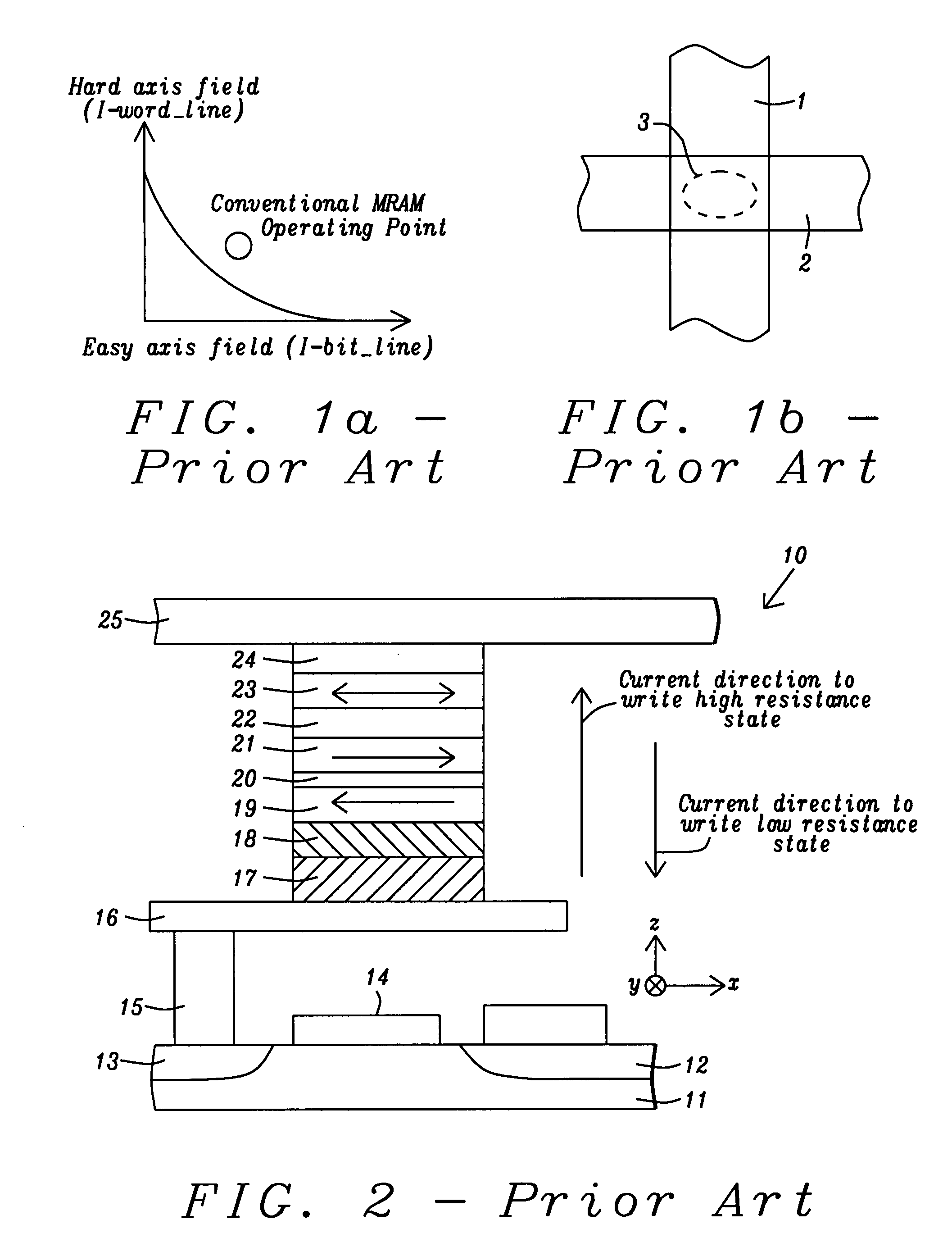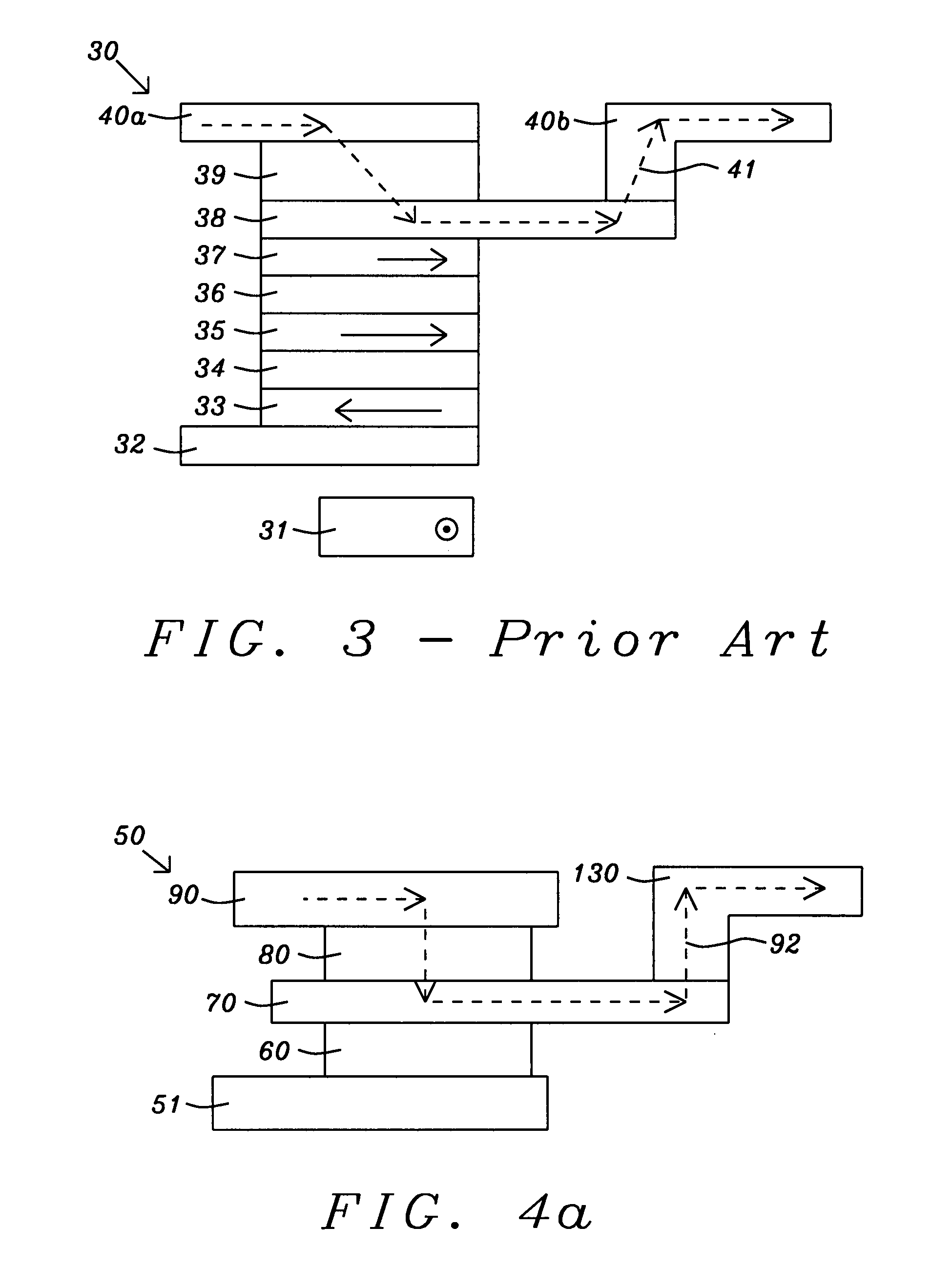Spin transfer MRAM device with separated CPP assisted writing
a technology of assisted writing and transfer mram, which is applied in the direction of semiconductor devices, digital storage, instruments, etc., can solve the problems of destroying a thin tunnel barrier layer such as mgo, difficult to apply a sufficient electric current to the address wiring, and a large electric current magnetic field in the device, so as to increase the read and write efficiency
- Summary
- Abstract
- Description
- Claims
- Application Information
AI Technical Summary
Benefits of technology
Problems solved by technology
Method used
Image
Examples
Embodiment Construction
[0035]One aspect of the present invention is a CPP / MTJ sub-cell configuration within a Spin-RAM device that provides for a separation of write and read pathways so that the writing process and reading process can be independently optimized. In the CPP and MTJ cells, the exemplary embodiment depicts a single spin valve structure. However, the present invention also encompasses a CPP / MTJ sub-cell wherein one or both of the CPP cell and MTJ cell have a dual spin valve configuration. Devices based on this technology may be referred to as Spin-RAM or spin-transfer MRAM devices. Another aspect of the present invention is a wiring scheme comprised of a plurality of bit cells, word lines, and bit lines that takes advantage of a pair of CPP / MTJ sub-cells within each bit cell which enables the reading process to be more efficient. Those skilled in the art will appreciate that the terms “magnetic moment” and “magnetization direction” may be used interchangeably.
[0036]First, the CPP / MTJ sub-cel...
PUM
 Login to View More
Login to View More Abstract
Description
Claims
Application Information
 Login to View More
Login to View More - R&D
- Intellectual Property
- Life Sciences
- Materials
- Tech Scout
- Unparalleled Data Quality
- Higher Quality Content
- 60% Fewer Hallucinations
Browse by: Latest US Patents, China's latest patents, Technical Efficacy Thesaurus, Application Domain, Technology Topic, Popular Technical Reports.
© 2025 PatSnap. All rights reserved.Legal|Privacy policy|Modern Slavery Act Transparency Statement|Sitemap|About US| Contact US: help@patsnap.com



